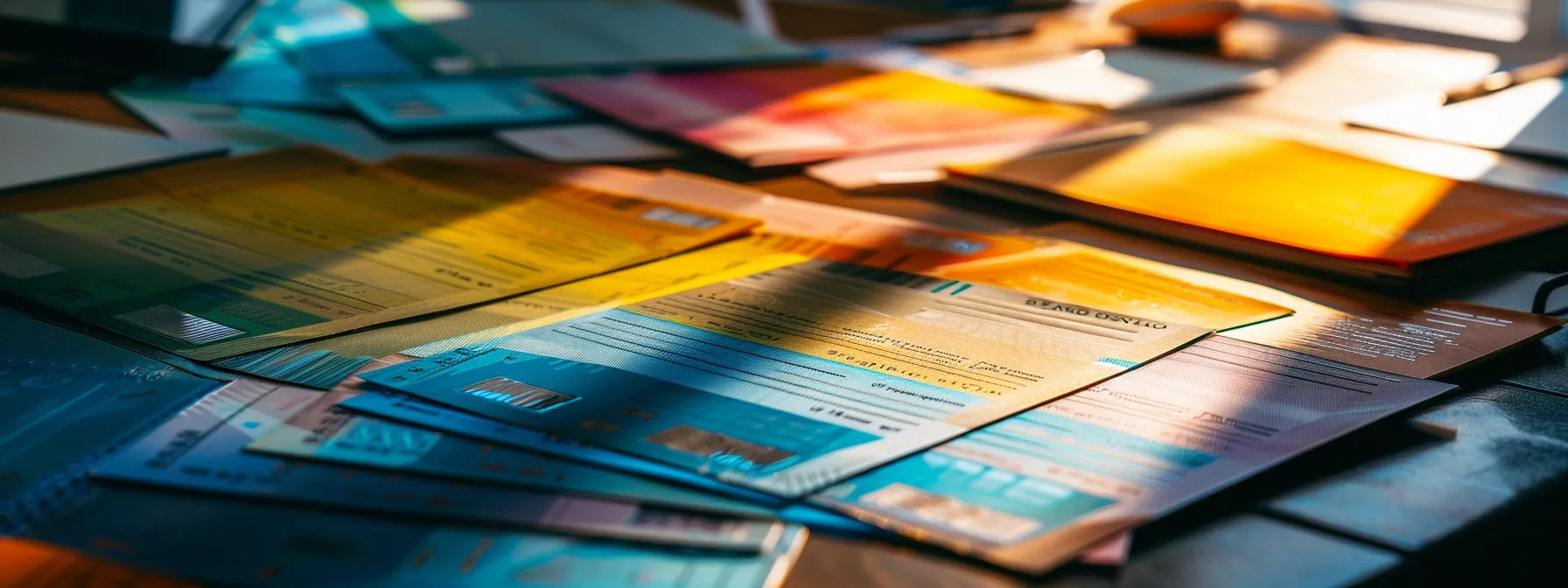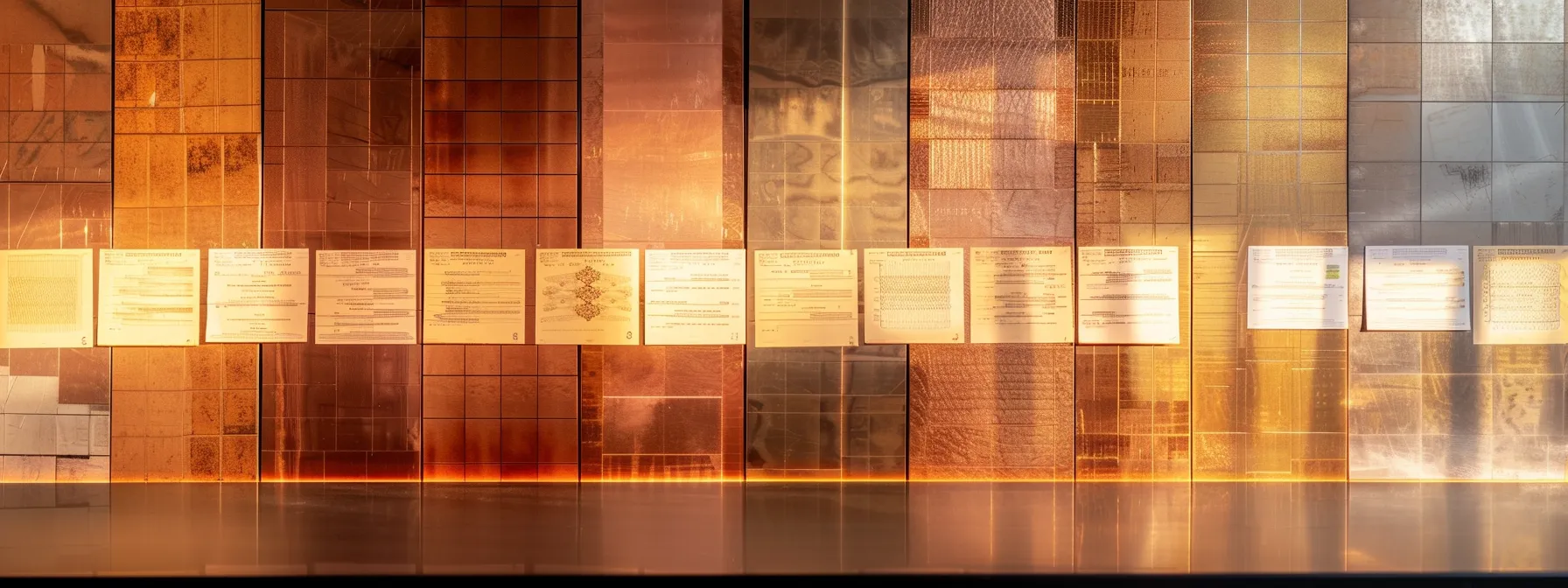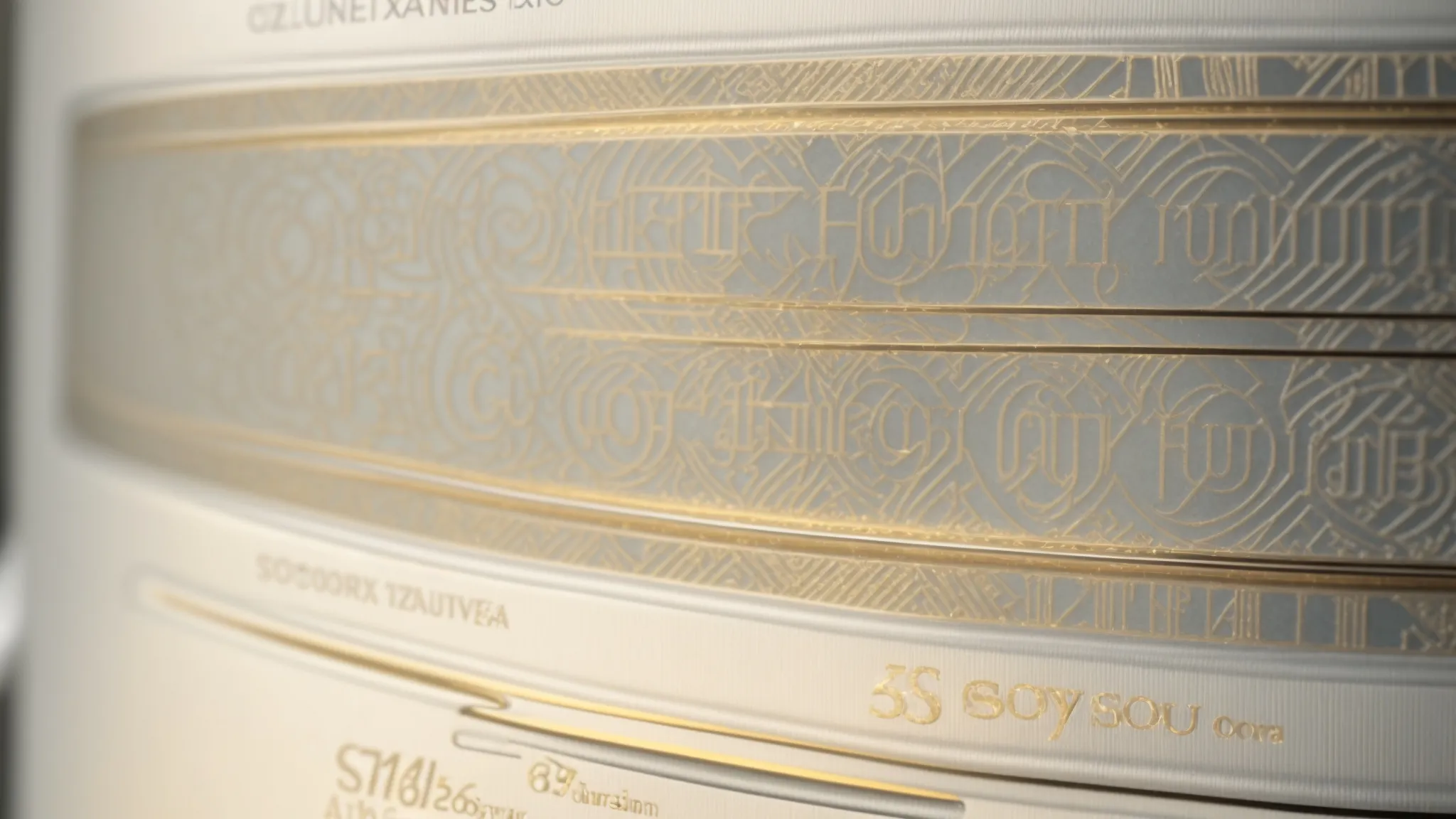Designing personal cheques may seem unimportant, but it can significantly reflect an individual’s unique style. This blog post will guide readers on the various design elements they can incorporate to make their cheques stand out, including artwork, colors, and security features. Additionally, it will touch on the importance of compatibility with check printing software and accounting software for seamless transactions. By the end of this article, readers will understand how to enhance their cheques‘ aesthetics while ensuring they meet essential security standards, addressing the common concern of having both style and functionality in their personal banking methods.
Understand the Importance of Personal Cheques in Expressing Style

Personalization in financial tools, such as payroll systems, allows individuals to express their unique identity. Custom checks can be designed to reflect personal style, making transactions more engaging. This section explores how personal cheques can serve as a canvas for individual expression while also discussing the importance of design in invoices and maintaining clear communication through details such as an email address.
The Role of Personalization in Financial Tools
Personalization plays a significant role in cheque design, allowing individuals to create custom checks that resonate with their brand identity. The choice of ink, colors, and imagery helps transform a standard financial tool into a unique reflection of one’s personal style. When clients receive a cheque that’s specifically designed, it enhances engagement and reinforces the message that care has been taken in the transaction.
Blank cheques can also benefit from personalization, as individuals can choose designs that convey their personality or business ethos. This practice not only makes transactions more stylish but also helps businesses stand out in a competitive market. By incorporating recognizable elements into check printing, such as logos and distinctive themes, organizations foster brand recognition while ensuring every payment reflects their identity.
How Personal Cheques Can Reflect Individual Identity
Personal cheques serve as more than just a method of payment; they are an extension of individual identity. Custom designs on printed cheques can prominently feature unique elements such as personal imagery or logos, effectively communicating the personality or brand behind them. This not only makes transactions memorable but also showcases a commitment to style that clients appreciate, thereby enhancing overall customer service experiences.
The ability to print checks with distinctive designs also emphasizes accessibility in finance. Individuals or businesses can create laser–printed cheques that resonate with their ethos, whether it’s playful, professional, or artistic. Utilizing custom features allows for the expression of identity in financial dealings, making each cheque a reflection of one’s unique approach, thus fostering stronger relationships with customers and viewers alike.
Personal cheques are more than a means of payment; they reflect who you are. Now, it’s time to consider how the right design elements can bring your personal style to life.
Choose the Right Design Elements for Your Personal Cheques

Selecting the right design elements for personal cheques is essential to express individuality effectively. This involves choosing colors that resonate with personal identity, incorporating unique patterns and graphics, and selecting fonts and typography that catch attention. Each of these aspects contributes to creating cheques that not only serve a practical purpose but also enhance the overall accounting experience.
These design choices can make a significant impact, ensuring that cheques stand out and convey a sense of character. By focusing on these elements, individuals can elevate their transactional interactions while minimizing associated fees and emphasizing their unique style.
Selecting Colors That Resonates With Your Personality
Selecting colors that resonate with one’s personality is vital when designing personal cheques. Colors convey emotions and reflect individual styles, helping to create a distinct brand identity. For example, a bold, vibrant color palette may express creativity and energy, while softer, muted tones might communicate professionalism and elegance.
When designing cheques, individuals should consider their target audience and the message they wish to convey through color choices. Using contrasting colors for text and background can enhance readability and ensure that vital information stands out. By thoughtfully selecting colors that align with personal values or business ethos, individuals can design cheques that not only function effectively but also leave a memorable impression on recipients.
Incorporating Unique Patterns and Graphics
Incorporating unique patterns and graphics into personal cheques enhances their visual appeal and aligns them with personal or business branding. Various graphic elements, such as logos or signature designs, can create a cohesive look that reinforces brand identity. By utilizing thoughtful patterns alongside distinct imagery, cheque designs can become memorable and engaging, ultimately fostering stronger connections with recipients.
Selecting suitable graphics is equally important as it communicates the sender’s personality and style effectively. Opting for simple yet striking visuals can make a cheque stand out while ensuring that essential information remains clear and legible. By incorporating personal touches, such as monograms or thematic designs, individuals can transform their personal cheques into personalized financial tools that reflect their unique style and professionalism.
Choosing Fonts and Typography That Stand Out
Choosing the right fonts and typography for personal cheques is an essential aspect of creating a unique style that captures attention. Ideal font choices should be both legible and visually appealing, ensuring vital information stands out clearly. For instance, mixing a bold font for the cheque amount with a more delicate script for the signature can establish a striking balance that communicates professionalism while also reflecting personal flair.
Effective typography not only contributes to the overall aesthetic of personal cheques but also conveys an individual’s or business’s identity. Selecting fonts that align with the overall design theme reinforces branding. A modern, sans-serif font may convey a contemporary feel, while a classic serif font can evoke tradition and reliability. By focusing on fonts that resonate with their personal or business ethos, individuals can transform standard financial tools into distinctive representations of their unique style.
Now that you understand the key elements to consider in your cheque design, it’s time to see what options are available. Discovering the right style can make your cheques not just functional, but also a reflection of who you are.
Explore Various Design Options for Personal Cheques

Designing personal cheques offers a spectrum of options that can reflect individual style effectively. Traditional designs emphasize classic elements, while modern designs often favor sleek aesthetics. The impact of minimalist aesthetics can provide sophistication without distraction. Additionally, using themes related to personal interests or hobbies can further personalize cheques, making each payment a unique representation of identity and creativity.
Traditional vs. Modern Designs
Traditional cheque designs often incorporate classic elements such as formal borders, subtle color schemes, and a structured layout. This style appeals to those valuing elegance and corporate professionalism, making it suitable for formal transactions and businesses aiming to convey reliability. For example, incorporating a refined logo and a serif font can enhance the perception of trustworthiness in financial transactions.
On the other hand, modern cheque designs offer a more contemporary approach, featuring bold colors, minimalist aesthetics, and creative layouts. This style is ideal for individuals or businesses that seek to express creativity and uniqueness. By utilizing eye-catching graphics and sans-serif fonts, cheque designs can become artistic statements while still serving their practical purpose, appealing to a younger audience or those in creative industries.
The Impact of Minimalist Aesthetics
Minimalist aesthetics in personal cheque design can significantly enhance visual clarity and functional appeal. By reducing clutter and focusing on essential elements, users of cheques can ensure that vital information stands out prominently. For example, a straightforward layout with ample white space allows recipients to quickly identify the amount and payee, improving the overall efficiency of financial transactions.
Adopting minimalist principles also communicates a sense of sophistication and professionalism. Individuals and businesses that opt for simple yet elegant designs tend to convey reliability and attention to detail. Using clean lines and subtle colors can create a strong brand image while ensuring that each cheque remains practical for everyday use, making it ideal for those looking to express a unique style through effective and purposeful design.
Using Themes to Showcase Interests and Hobbies
Using themes related to personal interests and hobbies can significantly enhance the appeal of custom cheques. Whether an individual is passionate about gardening, sports, or art, incorporating these themes into the cheque design can create a visually appealing and meaningful financial tool. For example, a floral motif may resonate with someone who loves plants, making the cheque more engaging for both the sender and the recipient.
Additionally, showcasing personal interests through cheque themes fosters a sense of connection during transactions. When clients receive a cheque adorned with images or graphics that reflect shared interests, it makes the experience feel more personal and memorable. This connection can strengthen business relationships, as tailored designs resonate with clients, ultimately enhancing customer service and satisfaction.
Choosing the right design for personal cheques is just the beginning. It’s also essential to think about the security features that protect your financial information as you create your unique cheques.
Customize Security Features While Designing Cheques

Understanding how security affects design choices is essential for creating personal cheques that blend style with safety. Incorporating effective security elements, such as watermarks and unique patterns, enhances protection against fraud while still allowing for personal expression. This section discusses the importance of balancing aesthetics with fraud prevention techniques, ensuring that personal cheques remain both visually appealing and secure.
Understanding How Security Affects Design Choices
When designing personal cheques, security features must be a priority alongside aesthetics. Incorporating elements like watermarks and specialized patterns not only deters fraud but also allows for creative expression. Choosing secure designs can enhance the overall appearance of the cheques while ensuring that they remain functional and trustworthy financial tools.
Understanding how security influences design choices is essential for anyone looking to create custom cheques. For instance, integrating security threads into design can provide an extra layer of protection without compromising style. By carefully considering security while designing, individuals can achieve a balance that meets personal expression and safeguards financial transactions effectively.
Incorporating Watermarks and Other Security Elements
Incorporating watermarks into personal cheques not only enhances their aesthetic appeal but also serves as a vital security feature. Watermarks can make cheques more difficult to replicate, protecting them from counterfeiting while allowing individuals to express their unique style. For instance, custom watermarks might include personal logos or designs that align with one’s brand identity, adding a layer of sophistication to each transaction.
Other effective security elements, such as specialized patterns or microprinting, can also be integrated into the cheque design to further reduce the risk of fraud. These features maintain the cheque‘s functionality and reinforce trust in financial dealings. By combining attractive design with practical security solutions, individuals can ensure that their personal cheques safeguard their finances while still showcasing their individuality.
Balancing Aesthetics With Fraud Prevention Techniques
When designing personal cheques, it is vital to prioritize both aesthetics and security. Incorporating advanced security techniques, such as microprinting or specialized patterns, can significantly reduce the risk of fraud while allowing individuals to express their unique style. For example, a custom cheque featuring a vibrant design can still include these secure elements, ensuring that the cheque remains attractive yet protected against potential scams.
Balancing aesthetics with security techniques helps create cheques that are not only visually appealing but also functional. By integrating features like watermarks into their designs, individuals can enhance the sophistication of their cheques while securing vital transaction information. This approach not only fosters a sense of trustworthiness in financial dealings but also showcases a commitment to quality that clients appreciate.
As you shape your cheque‘s security features, consider how design impacts daily life. Next, discover the best practices that ensure your personal cheques reflect your identity and serve your needs.
Best Practices for Designing Your Personal Cheques

Designing personal cheques requires a focus on critical aspects to ensure effectiveness. Prioritizing readability and clarity ensures all essential information is easily understood. Tips for layout and aesthetic balance help create visually appealing cheques, while adhering to legal requirements is crucial for compliance. These practices will enhance the overall functionality and style of personal cheques, creating a unique reflection of identity.
Ensuring Readability and Clarity
Ensuring readability and clarity in personal cheque design is crucial for effective communication. Individuals should prioritize the size and font style to make essential information, such as the payee, amount, and date, easily legible. A well-thought-out layout that balances design elements with functional aspects can prevent confusion, ultimately enhancing the user experience during transactions.
For personal cheques, using contrasting colors for text and background can significantly improve visibility. This approach allows recipients to quickly identify key details, ensuring smooth processing at banks. By focusing on clear information presentation, individuals create cheques that not only reflect personal style but also maintain professional standards, fostering trust and reliability in financial interactions.
Tips for Layout and Aesthetic Balance
When designing personal cheques, achieving a harmonious layout is essential to convey both style and functionality. This involves organizing key information such as the payee, date, and amount in a clear, logical order. A balanced layout not only ensures that these details are easily identifiable but also enhances the overall visual appeal of the cheque, making it an engaging financial tool that reflects the individual’s personality.
Aesthetic balance can be effectively achieved by utilizing consistent margins and aligning text elements neatly. Using contrasting colors for text and backgrounds can improve readability while adding visual interest. For example, pairing a bold font for the cheque amount with a softer typeface for the payee’s name creates a pleasing contrast that draws attention to essential details, ensuring that the design is both functional and stylish.
Adhering to Legal Requirements in Design
When designing personal cheques, adhering to legal requirements is essential to ensure that transactions are smooth and secure. This includes incorporating specific elements such as the cheque number, account number, routing number, and the name of the bank. Failure to include these details can lead to rejected payments, causing inconvenience to both the issuer and the recipient.
Moreover, it is crucial to understand the regulations set forth by banking authorities, as these rules vary by location. Individuals should also ensure that all required security features, such as watermarks or microprinting, are integrated into their custom designs, enhancing both safety and professionalism. By prioritizing compliance with these legal standards, personal cheques not only reflect style but also maintain functionality and reliability in financial transactions.
You’ve crafted a cheque that reflects your style and needs. Now, it’s time to share those designs and see what others think.
Share Your Unique Designs and Get Feedback
Engaging with online communities allows individuals to share their uniquely designed personal cheques and receive creative input. Utilizing social media platforms to showcase these custom designs not only enhances visibility but also invites valuable feedback. Gaining insights on personal cheque designs from various perspectives can help refine their style, ensuring the final product resonates with both personal identity and professionalism.
Engaging With Online Communities for Creative Input
Engaging with online communities is a valuable way for individuals to showcase their personalized cheque designs and gather constructive feedback. Platforms such as social media groups or design forums allow cheque designers to share their work with fellow creators, receiving insights that can enhance their style. This type of collaborative environment fosters creativity and helps individuals discover design elements they may have overlooked.
By participating in discussions surrounding cheque design, individuals can also gain inspiration from the experiences of others. Learning about different design approaches and preferences shared by community members provides practical ideas that can be incorporated into personal cheque projects. Moreover, constructive critiques can assist in refining designs, ensuring that they effectively capture personal identity while maintaining legal and functional requirements.
Utilizing Social Media to Showcase Your Cheques
Utilizing social media to showcase personal cheques allows individuals to share their unique designs with a wider audience. By posting images on platforms such as Instagram, Facebook, or Twitter, cheque designers can attract feedback from fellow users, which can lead to constructive suggestions for enhancements. This engagement fosters a sense of community and provides valuable insights that can refine individual styles.
Benefits of Receiving Feedback on Personal Designs
Receiving feedback on personal cheque designs provides essential insights that can enhance the overall quality and effectiveness of these financial tools. Input from others can highlight elements that resonate well and areas requiring adjustment, helping individuals refine their designs to better reflect their unique style. This constructive critique can also facilitate compatibility with legal requirements and improve clarity, ensuring that cheques remain functional in practical use.
Engaging with feedback not only fosters creativity but also strengthens community connections among cheque designers. By discussing design choices with peers, individuals can discover new trends, techniques, and inspiration that they may not have considered. This collaborative approach empowers individuals to create personal cheques that are not only visually appealing but also align with professional standards, ultimately enriching their brand identity and enhancing customer interactions.

